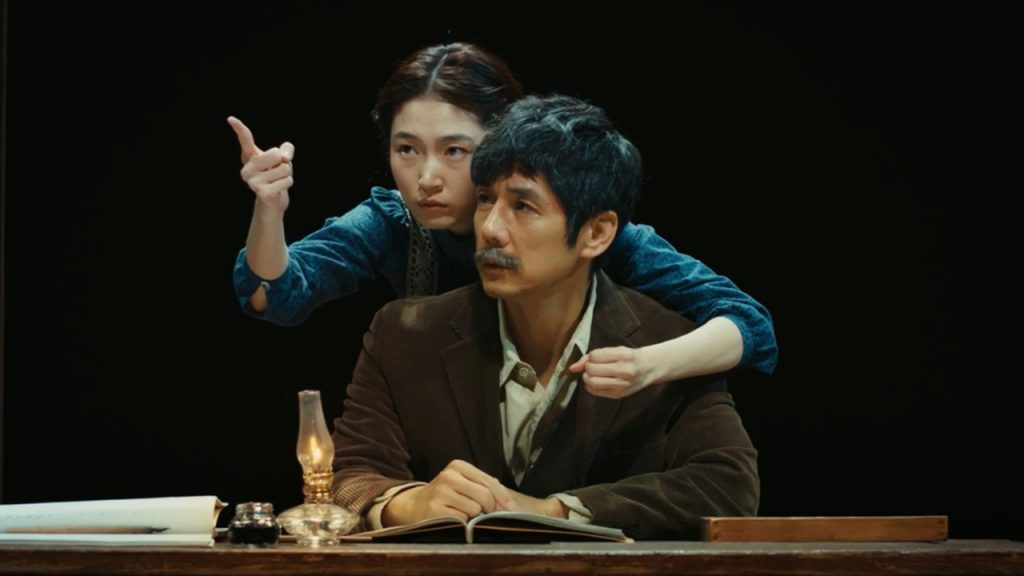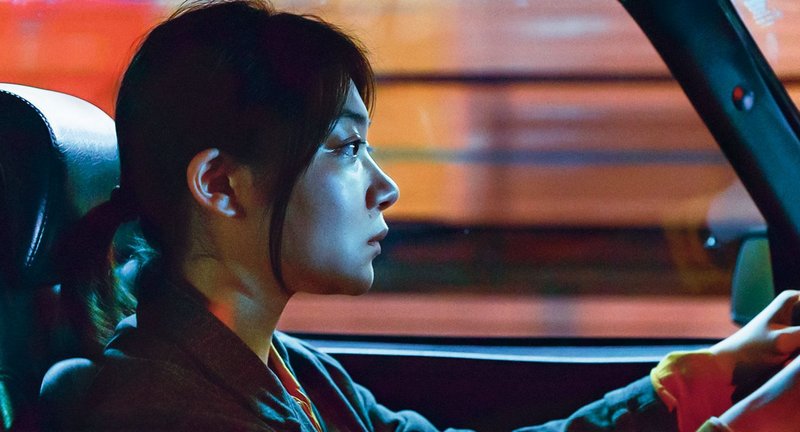Madeline Choi reviews Ryūsuke Hamaguchi’s thoughtfully moving adaptation of Murakami.
“The script is a vehicle”— Dir. Ryūsuke Hamaguchi
Expanding from Haruki Murakami’s short story of the same title, Drive My Car (2021) tells the story of Yūsuke (Hidetoshi Nishijima), a stage director and actor. With his heartbreaking family history, his recent discovery of his wife’s infidelity, and the prognosis of a visual impairment, Hamaguchi tells the story of one man’s midlife. Relying heavily on dialogue and subtle cinematography, the film subtly paints intimacy and pain through its three-hour slow burning runtime.
Drive My Car opens with an erotic silhouette of Yūsuke’s wife, Oto (Reika Kirishima), as she begins to tell one of her many stories. An actress and screenwriter, Oto conceptualises her art after sex with her husband. Like most of Murakami’s depictions of women, the Oto is indisputably shaped primarily through her sexual relationships. The film’s main conflict is introduced when Yūsuke walks into his own home only to discover Oto having an affair with young actor Kōji (Masaki Okada). The camera fixates on Yūsuke’s reflection in the mirror, the audience invited to focus on the passionate couple. Yūsuke chooses to leave quietly. His pain at the the loss of his young daughter and now, his wife’s betrayal is conveyed through his emotional restraint. Perhaps expecting an outburst of anger, a monologue and dramatic cinematography, the audience is instead met with a series of unsentimental shots and dialogue. Nishijima manifests emotion subtly as the camera lingers on the inner turbulence which shifts to stoic repression.
Hamaguchi makes language a central motif of Drive My Car . When discussing the dialogue-heavy nature of the three-hour film, the director spoke of the vehicular allure of the screenplay. Like Yūsuke’s multilingual direction of Chekhov’s play Uncle Vanya, the film plays with the idea of language as more than simply a means of communication. The rehearsals of Uncle Vanya which take place throughout the film present two conflicts: firstly, the differences to be found between the Japanese, Korean, Korean sign-language, Mandarin, and Tagalog speakers, and secondly, the differences between those who share the same language of Japanese. Concurrently, the audience is introduced to Yūsuke’s driver, Misaki (Tōko Miura). A large part of the runtime is set in Yūsuke’s red car, with Yūsuke in the backseat and Misaki driving him to and from rehearsals. In this setting, the audience is presented with two sets of dialogue: the conversation between Yūsuke and Misaki, and the rehearsal of Yūsuke’s lines with Oto’s pre-recorded lines playing from a cassette tape. These two sets present Yūsuke’s growing and dying relationships with the two women. The script of the film moves the audience from one relationship to another and from one stage of Yūsuke’s life to another.

My favourite shot of the film is perhaps quite a simple one. The camera transitions from its focus on Yūsuke and Misaki smoking in the car, to resting on a shot of their hands above the sunroof with their lit cigarettes . The car and its surroundings are in a constant state of motion, but their hands and cigarettes remain motionless. In a way, this solitude and mutual understanding of pain is what brings these two grief-struck characters together.
By the end of the film, the narrative shifts from Yūsuke to Misaki. After the revelation of her guilt in allowing her abusive mother’s death, Yūsuke comforts Misaki by saying “We must keep living.” Breaking free from the grief for his daughter’s death and the failure of his marriage, Yūsuke is released of his pain as his numbness metamorphoses into the beginnings of moving forward.
The film, although riddled with one-noted representations of women and sex, presents personal intimacy in a delicate and investing manner. Drive My Car leaves the audience to reflect on their comfort with their own emotions, asking us to reflect on the way we view our relationships with other people and our art. The intimidating runtime does occasionally make itself known, but lends itself to an exploration of intricate layers of intimacy and pain. The simple but subtly emotional cinematography aids in the peeling back of these layers,the film’s visuals aesthetically progressing throughout the three acts. Despite its melancholic tone, the audience’s emotional investment pays off in one way or another. Hamaguchi’s screenplay and visual storytelling explores the universal themes of pain and intimacy in a beautifully haunting manner.
Drive My Car was released in the UK on the 19th November 2021. You can watch the trailer here:





I liked this review, made me watch the movie.